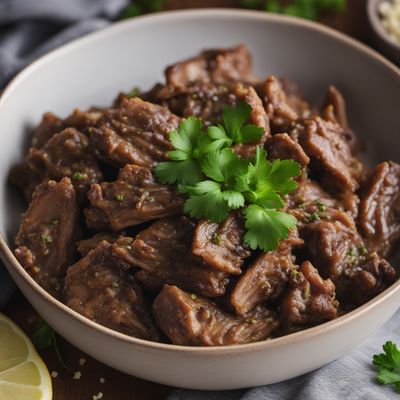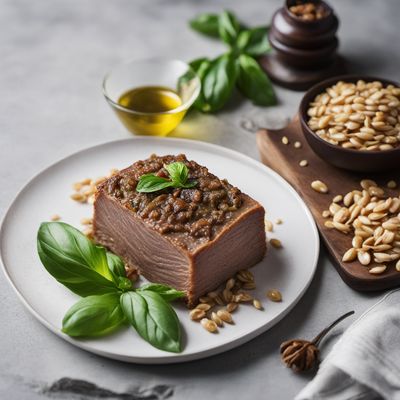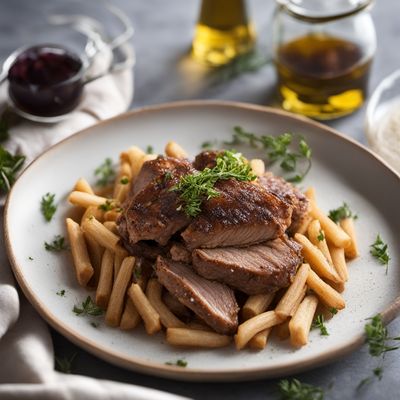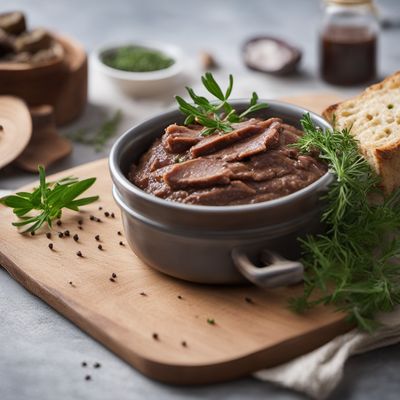
Ingredient
Poultry liver
The Nutrient-Rich Organ
Poultry liver has a rich, velvety texture and a deep reddish-brown color. It has a distinct flavor that is often described as earthy, robust, and slightly metallic. Poultry liver is prized for its high nutritional value and is commonly used in various cuisines around the world.
Origins and history
The consumption of poultry liver dates back to ancient times. Liver has been a prized ingredient in many cultures due to its high nutrient content and its association with vitality and strength. Poultry liver is widely used in traditional dishes, such as pâtés, terrines, and liver sausages, in European cuisines. It is also a common ingredient in Asian cuisines, where it is used in stir-fries, soups, and curries.
Nutritional information
Poultry liver is a nutritional powerhouse, packed with essential nutrients such as iron, vitamin A, vitamin B12, and folate. It is also a good source of protein and contains other vitamins and minerals. However, it is high in cholesterol and should be consumed in moderation, especially for individuals with certain health conditions.
Allergens
Poultry liver may cause allergic reactions in individuals with poultry or liver allergies. It is also high in cholesterol and should be avoided by individuals with high cholesterol levels or certain health conditions.
How to select
When selecting poultry liver, look for fresh, firm, and plump livers. The color should be deep reddish-brown, indicating freshness. Avoid livers with a greenish or yellowish tint, as it may indicate spoilage. If possible, choose organic or free-range poultry liver for better quality and flavor.
Storage recommendations
To maintain the freshness and quality of poultry liver, it should be stored in the refrigerator at a temperature below 40°F (4°C). It is recommended to use it within 1-2 days of purchase. If not consumed immediately, it can be frozen for later use. Thaw frozen poultry liver in the refrigerator before cooking.
How to produce
Poultry liver cannot be produced by amateurs as it requires specialized knowledge and facilities for raising poultry and processing the liver. It is best to purchase poultry liver from reputable sources or local farms.
Preparation tips
Poultry liver can be prepared in various ways, including sautéing, frying, grilling, or incorporating it into stews, pâtés, or terrines. It pairs well with flavors such as onions, garlic, herbs, and spices. It is important to cook poultry liver properly to ensure it is safe to consume and to achieve the desired texture and flavor.
Culinary uses
Poultry liver is commonly used in a variety of dishes and cuisines. It is a key ingredient in classic dishes such as pâtés, terrines, and liver sausages. Poultry liver can also be used in stir-fries, soups, curries, or as a topping for salads or crostini. It adds a rich and savory flavor to dishes and can be enjoyed as a delicacy.
Availability
Poultry liver is commonly available in grocery stores, supermarkets, and butcher shops. It is also commonly found in local markets or specialty stores that offer a wide range of organ meats.
More ingredients from this category
Recipes using Poultry liver

Mikeška Pašteta
Savory Czech Liver Pâté

Ligurian-style Pâté
Savory Ligurian Delight: Pâté with a Mediterranean Twist

Chifa-inspired Chicken Liver Pâté
Peruvian Fusion: Chifa Chicken Liver Pâté

Maltese-style Mazzafegato
Savory Maltese Liver Pate: A Taste of the Mediterranean

Homemade Croatian Liver Pâté
Velvety Delights: Croatian Liver Pâté

Chicken Liver with Sage
Savory Sage Chicken Liver Delight

Kimo Yakitori with Teriyaki Glaze
Savory Grilled Chicken Liver Skewers with Sweet Teriyaki Glaze

Georgian-style Chicken Liver Pâté Canapés
Savory Georgian Delight: Chicken Liver Pâté Canapés

Homemade Chicken Liver Pâté
Savory Delights: Indulge in Homemade Chicken Liver Pâté

Quebecois-style Grilled Chicken Liver Skewers
Maple-Glazed Delicacy: Quebecois Grilled Chicken Liver Skewers
